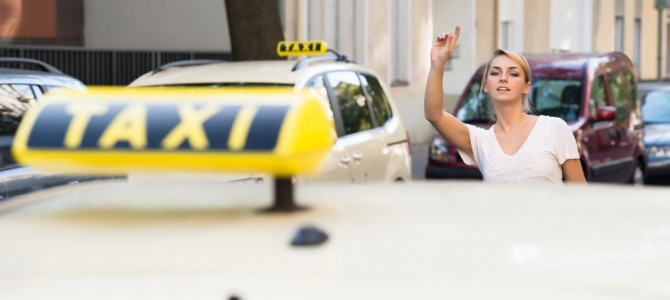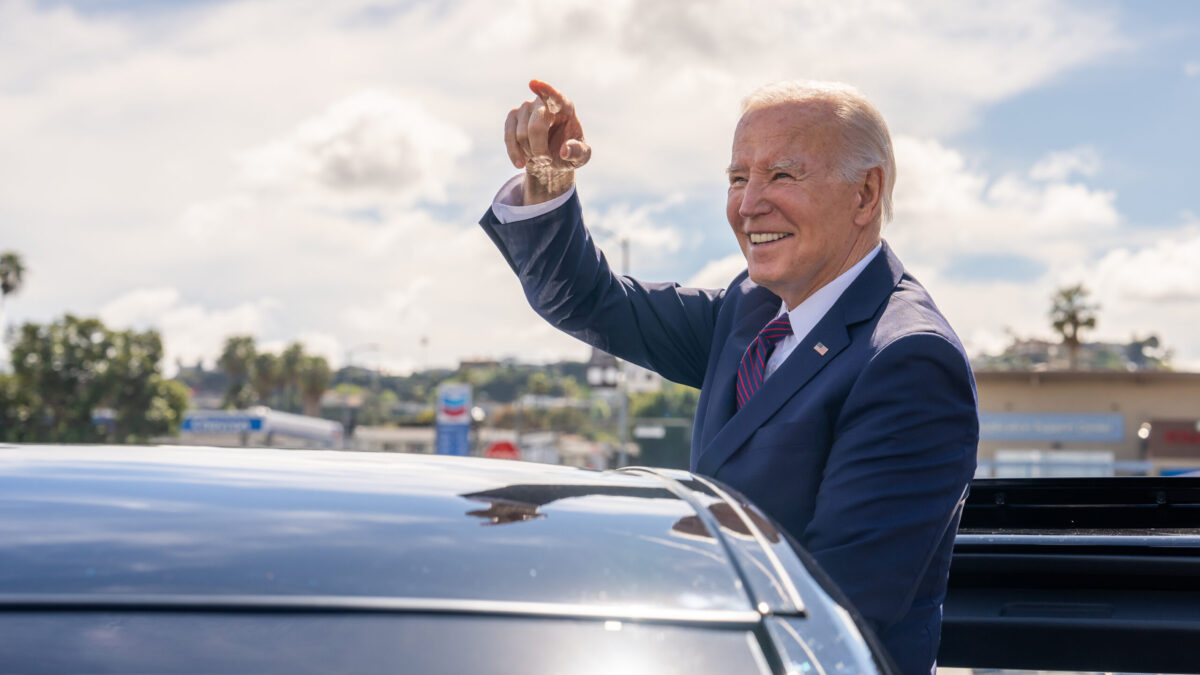
Uber has big plans for New York State, but many people, including New York City Mayor Bill de Blasio, a proudly progressive Democrat, are wary of the company’s growth. Critics claim the service is unsafe, leads to excessive traffic congestion, and unfairly competes with the city’s yellow taxis. These concerns are overstated, while Uber’s benefits are real.
Given the ridesharing firm’s success in expanding access to transportation in underserved boroughs in New York City, progressives should welcome Uber instead of trying to artificially limit its growth.
The data show a dynamic transportation market emerging across the city. In 2014, UberX, Uber’s cheapest, most popular offering, grew impressively in New York City, from 287,000 rides provided in January to 1,594,000 in December.
Uber Expands to Underserved Neighborhoods
UberX’s popularity has led its drivers away from “core” Manhattan (south of West 110th Street and south of East 96th Street) to noncore Manhattan neighborhoods long underserved by yellow taxis. In December 2014, 27 percent of UberX pickups were outside Manhattan or city airports. For comparison, less than 6 percent of yellow taxi rides begin in the outer boroughs (excluding airports) and the northern tip of Manhattan.
Uber is not only moving away from downtown and midtown Manhattan, but also expanding into low-income neighborhoods. Over the course of 2014, monthly UberX pickups in historically low-income neighborhoods such as Astoria, Harlem, Jackson Heights, and Washington Heights grew twelve-fold or more. Of December UberX pickups in non-core Manhattan, 60 percent were in ZIP codes with median household income below the non-core Manhattan median—up from 54 percent in January.
As someone who lived in Jamaica, Queens for four years, I can attest to how rare it was to even see a yellow taxi—much less successfully hail one. Even getting back home from Manhattan was difficult, as drivers would turn you down when they found you needed a ride to an outer borough.
Trips per household in low-income, non-core Manhattan ZIP codes increased from an annualized 0.24 in January to 1.97 in December. This closed the gap between low-income and high-income, non-core Manhattan ZIP codes. Uber, in other words, is expanding fast in New York’s low-income neighborhoods as the service gains popularity.
Uber’s benefits do not seem to vary along racial lines. Of the 29 non-core Manhattan neighborhoods with more than one UberX trip per household in 2014, black households made up 29 percent of total households. This is right in line with the non-core Manhattan average of 27 percent. Neighborhoods from Park Slope, where less than 5 percent of households are black, to Crown Heights, where over 75 percent of households are black, all saw massive UberX growth and at least one ride per household in 2014.
Uber Is Safer and Reduces Traffic
Rides may also find Uber safer than the alternatives. Drivers who partner with the company go through background checks and vehicle safety requirements. Additionally, New York City drivers are licensed by the city’s Taxi and Limousine Commission (TLC), a step not required in most other U.S. cities. Uber also provides it drivers with comprehensive liability insurance coverage that is more than three times as high as TLC’s taxi requirements.
Uber’s post-ride electronic payment and rating system remove cash and anonymity, which makes the trips safer for both drivers and passengers. Surprisingly, even with the requirement to accept credit cards, around 45 percent of taxi trips were paid for with cash last year, according to TLC data. This is one reason why the homicide rate for taxi drivers is 20 times higher than the U.S. average and more than double rate for police officers.
Even in the face of these benefits, some critics of Uber’s expansion still advise caution, citing traffic congestion concerns. For proof, they point to the number of additional vehicles Uber is putting on the streets, as the service now has more affiliated drivers than New York City has yellow taxi medallions.
Simply because more drivers have signed up to partner with Uber, however, does not mean they are on the road full time. Four in ten New York City drivers who partner with Uber work less than 15 hours a week, and less than 10 percent drive for more than 50 hours a week. The average yellow taxi shift is 9.5 hours. This means many Uber drivers are using the service for part-time work. Everyone from single parents to students to those trying to pay the bills while in between jobs benefits from the additional—and flexible—work opportunities that Uber provides.
Don’t Block Me From My Uber
Uber claims it will create 10,000 jobs in New York City next year if it is allowed to continue expanding. Even if this claim is inflated because most drivers work part time, putting a 2 percent cap on its number of drivers—as de Blasio proposed—would substantially limit work options for New Yorkers.
In a video Uber released to show how its service benefits the city, one driver named Lassana explained how driving with Uber benefits him. He said, “I make more money and I spend more time with my family… we don’t just pick people up. We pick ourselves up, we pick our families up… I don’t this [de Blasio’s plan] is really fair.”
People don’t like it when government gets between them and their Ubers. Strong public outcry earlier this year prevented City Hall from halting Uber’s growth and forced the city into a truce. In exchange for access to Uber’s private ride information, City Hall allowed Uber and other ridesharing companies to continue expanding while it studied their effect on Manhattan traffic. (New York City’s congestion study was supposed to be released at the end of November, but, of course, its release has been delayed.) After the study is completed, likely by early January, the mayor’s proposed cap could still be applied.
Uber’s success has also cast a harsh light on New York’s yellow-taxi monopoly, a nearly 80-year-old relic that restricts the number of medallions—and, thus, yellow taxis—to 13,437.
Anyone who has tried to hail a taxi during rush hour, in the rain, or late at night knows this cap is too low. Indeed, in the late 1930s, the medallion cap was 16,900, or 26 percent higher than today, even though the city’s population has since increased by more than 20 percent. In the ensuing years, New Yorkers, especially low-income residents, saw their transportation options artificially squeezed. Meanwhile, medallion owners made a killing: A 2013 auction raised a record $1.3 million for a single corporate medallion.
One of the taxi millionaires was Gene Friedman. At one point, he owned over 1,000 medallions. Friedman accomplished this by using highly leveraged financing to buy up medallions and intentionally push their prices higher to make himself look wealthier on paper. But since his access to capital has dried up alongside Uber’s rise, Freidman is now asking New York City taxpayers to bail him out, an incredulous request to say the least.
Let People Lift Themselves Up
Contrast this billionaire who was taking advantage of a government-created monopoly with Moises, another Uber driver from the video. Moises rightly pleaded, “Millionaire medallion owners don’t need help. People like us do.” Not only did Friedman use his political power and wealth to enrich himself, but he also is still trying to limit the work and transportation opportunities that Uber provides to thousands of New Yorkers, including Moises.
With smartphone-based competition suddenly loosening the yellow-taxi stranglehold and medallion prices plummeting, Uber is accomplishing what taxis have consistently failed to achieve—expanded transportation options for lower-income, outer-borough New Yorkers. Encouragingly, New York Gov. Andrew Cuomo has proposed a new statewide regulatory framework to encourage ridesharing companies’ expansion throughout the rest of the state.
“Uber is one of these great inventions, startups, of this new economy and it’s taking off like fire to dry grass and it’s giving people jobs,” he declared. “I don’t think the government should be in the business of trying to restrict job growth.”
De Blasio’s opposition to Uber and other transportation upstarts also squares poorly with his progressive principles, including his campaign pledge to narrow inequalities between the city’s residents. Why focus on Manhattan traffic when few inequalities are as glaring as the inability of lower-income New Yorkers to safely and affordably hail a taxi in their own neighborhoods?
Uber’s effect on New York City is clear: It has widened transportation options for residents of all income levels; it has been a job-creation machine for drivers; and it has done all this safely and legally, adhering to and going beyond the safety standards required of yellow-taxi drivers. Truly progressive thinking means not standing in the way of clear innovation and widely-shared growth. Even if de Blasio ignores this reality, at least Cuomo has taken note. New York’s legislature should, too.
For more, read Meyer’s report, “Uber-Positive: The Ride-Share Firm Expands Transportation Options in Low-Income New York.”









